As most Cutter Family Finance followers know, I like to read. So, while on vacation last week, I was reading over some statistics that really gave me pause. Get this, only 28% of Americans – about 70 million people – are “financially healthy,” spending and saving responsibly, according to the Center for Financial Services Innovation (CFSI). And another fifty-five percent of Americans – 138 million people – are “financially coping,” meaning they’re struggling with some aspect of their financial lives. Seventeen percent, or 42 million, are struggling with all or nearly all of our financial lives.
Hmmm . . . I got thinking.
You see, achieving financial security requires discipline, hard work, and a plan to reach your goals. It’s not just about being wealthy, at least not for most of us. It can mean having enough to pay your bills, save for your retirement, and have enough left over to cover the occasional expense or financial setback. Judging from those numbers, even that is more than a lot of us can manage these days.
Regardless of what financial security means to you individually, the obstacles and challenges keeping us from financial security are very much the same. Let’s start with debt. Americans are living with more debt than ever before. Earlier this year consumer debt exceeded $4 trillion, according to the Federal Reserve. This includes student loan debt, auto loans, credit card debt, and much more. Credit card debt alone logs in at over $1 trillion. People are paying dearly for the privilege too, with average credit card interest around 17.71%, according to CreditCards.com.
Destructive debt, like credit cards – can and does keep many of us from achieving financial security. Not all debt is bad, of course. Student loan debt can improve your earning potential. A mortgage on a home can grow your net worth. But loans to pay for depreciating assets such as cars and boats, credit card debt and other high-interest personal loans can be destructive and work against your ability to secure your financial future.
When I advise folks on how to tackle debt, the very first step must be to create a budget. Folks, a budget helps you to understand fixed expenses, such as mortgage or rent payments, real estate taxes, car payments, and insurance premiums. But it also helps you understand your variable expenses, such as grocery bills, auto maintenance, fuel, and utilities. Once complete, we want to look at your total debt amount, but also the interest rates. This will help you get a better understanding of what you need to pay down first, as you develop a debt mitigation strategy.
I find during this budgeting process is an excellent time to take a hard look at our lifestyle and, in particular, our discretionary spending. Everyone must live within their means, and if you’re not, find ways to adjust your lifestyle until you are. Because living within your means is an essential aspect of financial security.
There’s more than one way to tackle debt. Two of most commonly used in the financial services industry are the Avalanche method and the Snowball method. The Avalanche Method focuses on prioritizing by paying the debts with the highest interest rates first. This approach lessens the amount of time you spend in debt because you’ll pay less interest on your principal as you pay it off, but it requires discipline and commitment. The Snowball Method focuses instead on paying off debts from smallest balance to the largest. It’s generally not as fiscally effective as the Avalanche approach, but it’s often more motivating, as you can see the number of debts dwindle more quickly as you make progress.
Often times, we find ourselves in debt to credit card companies and other lenders because we have an unforeseen large purchase or an emergency expense. Without having the cash on hand, an expensive repair or broken appliance charged to a credit card could cost you a lot more money over time due to the interest payable.
I always recommend setting up an emergency fund to help cover those unexpected financial setbacks without risking higher financial risk and exposure. Many experts suggest having cash or other liquid assets on hand to pay for at least six months of your living expenses and debt payments combined.
Don’t have that? I’m not surprised. Fewer than half American households can cover a $1,000 expense with savings, according to BankRates.com. But the bottom line is that any money you can set aside for an emergency fund may help to prevent you from borrowing in the future, further increasing your financial security.
And just because you have cash on hand for emergencies doesn’t mean it should be stuffed in a mattress. Make sure that money is working for you when you’re not using it. A high-yield savings account or money market account will earn some interest. Higher-yield CDs will tie up your cash for a specific length of time, with penalties for early withdrawal. That’s why investors often “ladder” their CDs, or open multiple CDs with different maturity rates, to make sure a certain amount of cash is available at all times while still earning higher yields than they would in savings alone.
Saving for retirement is also be a cornerstone of your financial security strategy. You might start with employer-sponsored retirement savings plans like a 401(k), especially if your employer offers matching contributions. If you have additional income to invest in your retirement – or if you don’t have a workplace plan – you may wish to consider opening a traditional IRA or Roth IRA on your own. While the contribution limits for IRAs are lower than they are for 401(k)s, they offer a greater range of investment options than those available in an IRA.
Maintaining a risk-adjusted investment approach can also help you achieve financial security. We have found over the years that if you manage the downside risk, or compress the losses from market swings, generally speaking, the upside should take care of itself. Unfortunately, for many, this is often not the case.
Now is a great time to reflect on your investment strategy. Questions to ask such as, “How did my investments behave during 2008, 2018, or . . . lately? What is your downside risk mitigation strategy to help avoid significant loss?” You must understand the strategy behind your plan. If you don’t, well, make sure to see out a professional who can help you develop a downside risk mitigation (DRM) strategy.
As I tell my three young ladies at home, anything worthwhile in life starts with a commitment. From that commitment derives determination, coupled with dedication and a desire to achieve success. Folks, in order to achieve financial security, let’s commit. You see, we all need a systematic approach to managing our finances with a clear vision of what we want to achieve. That vision must guide us as we develop strategies to help us get there. And that’s why my advice is always the same:
Be vigilant and stay alert, because you deserve more!
Have a great Labor Day!
Jeff Cutter, CPA/PFS is President of Cutter Financial Group, LLC, an SEC
Registered Investment Advisor with offices in Falmouth, Duxbury, Mansfield & Southlake, TX. Jeff can be reached at jeff@cutterfinancialgroup.com.
This article is intended to provide general information. It is not intended to offer or deliver investment advice in any way. Information regarding investment services is provided solely to gain a better understanding of the subject or the article. Different types of investments involve varying degrees of risk. Therefore, it should not be assumed that future performance of any specific investment or investment strategy will be profitable. Market data and other cited or linked-to content in this article is based on generally-available information and is believed to be reliable. Cutter Financial does not guarantee the performance of any investment or the accuracy of the information contained in this article. Cutter Financial will provide all prospective clients with a copy of Cutter Financials Form ADV2A and applicable Form ADV 2Bs. Please contact us to request a free copy via .pdf or hardcopy. Insurance instruments offered through CutterInsure, Inc.







